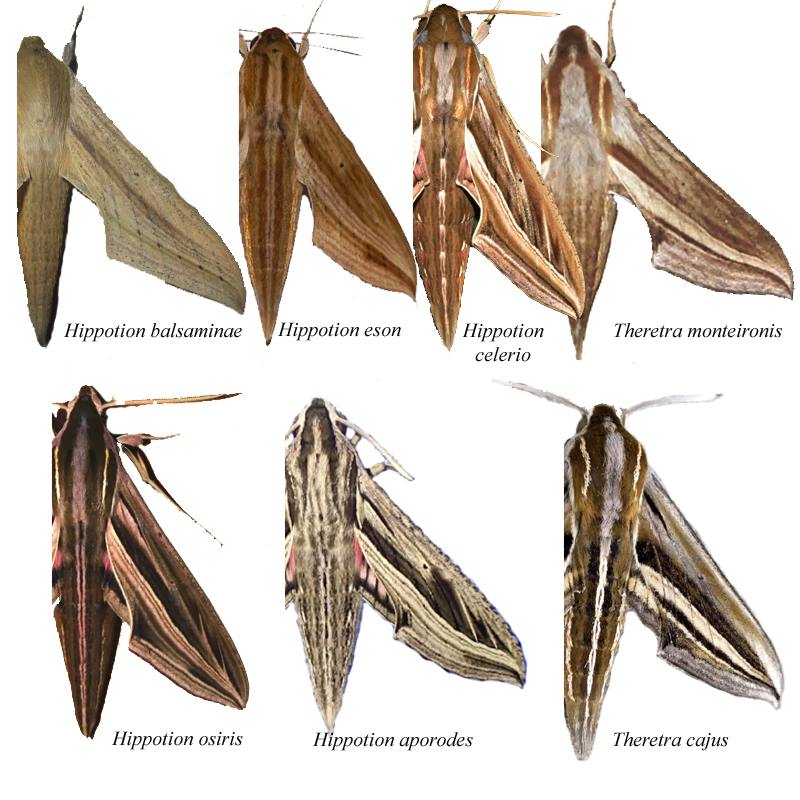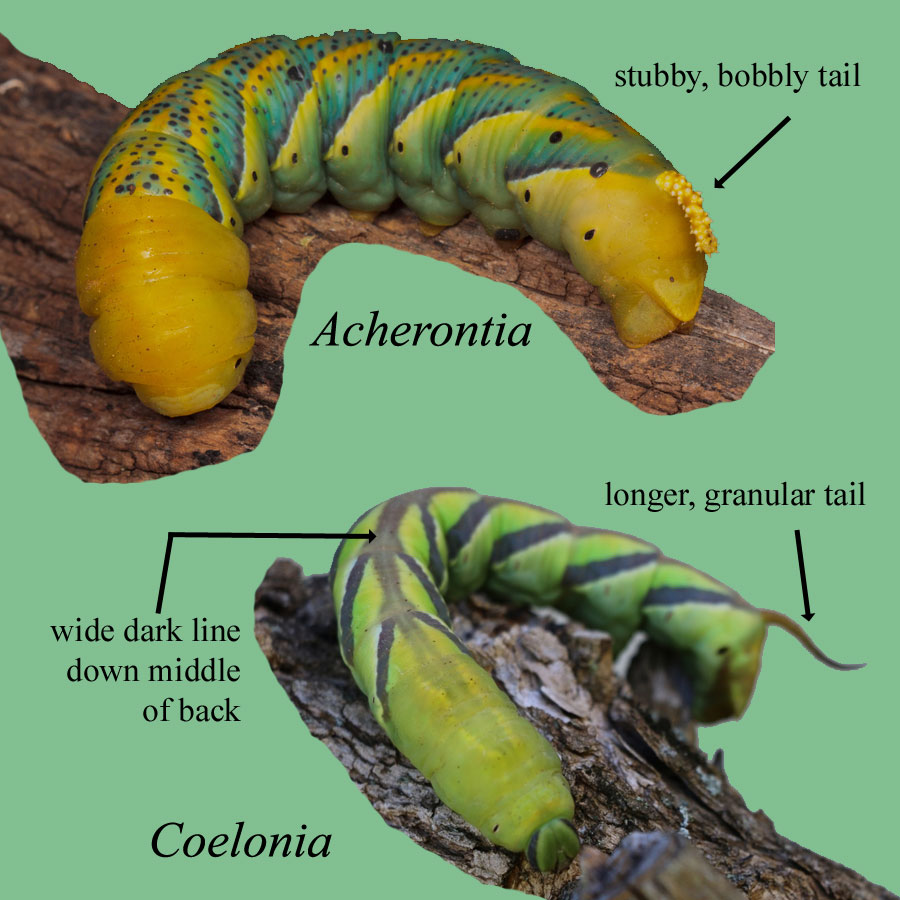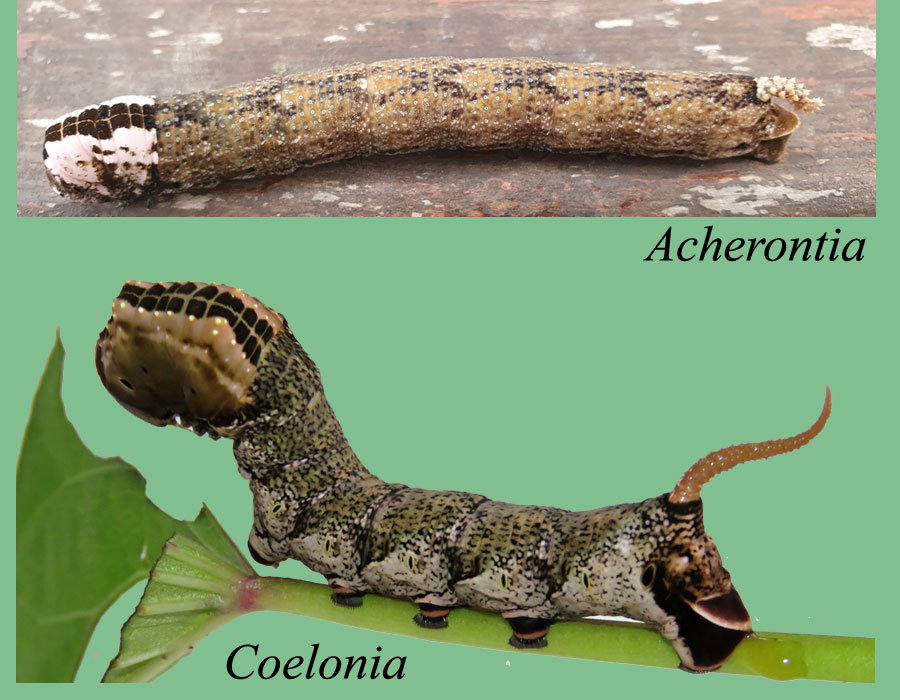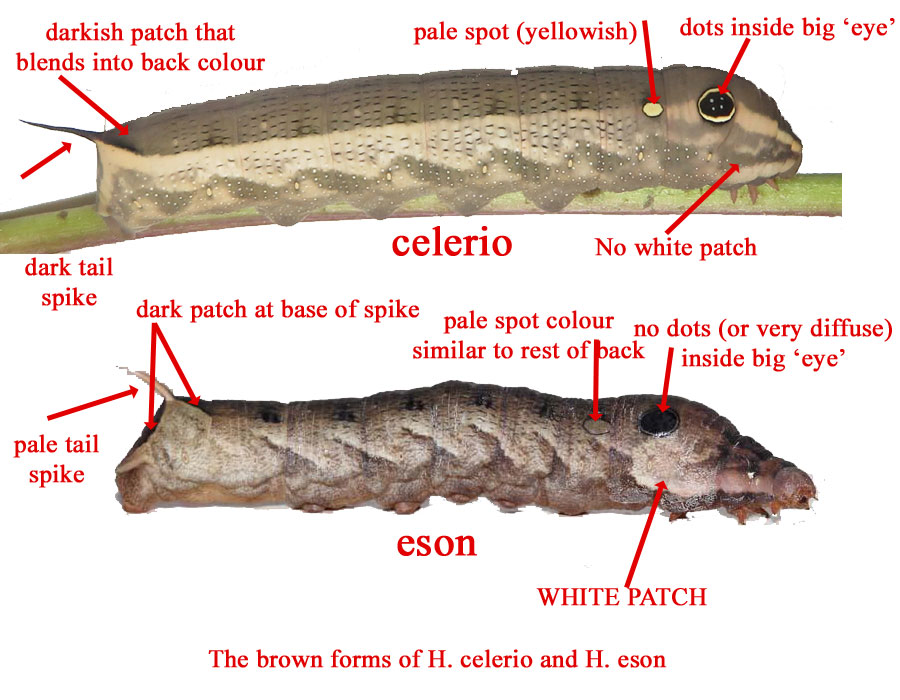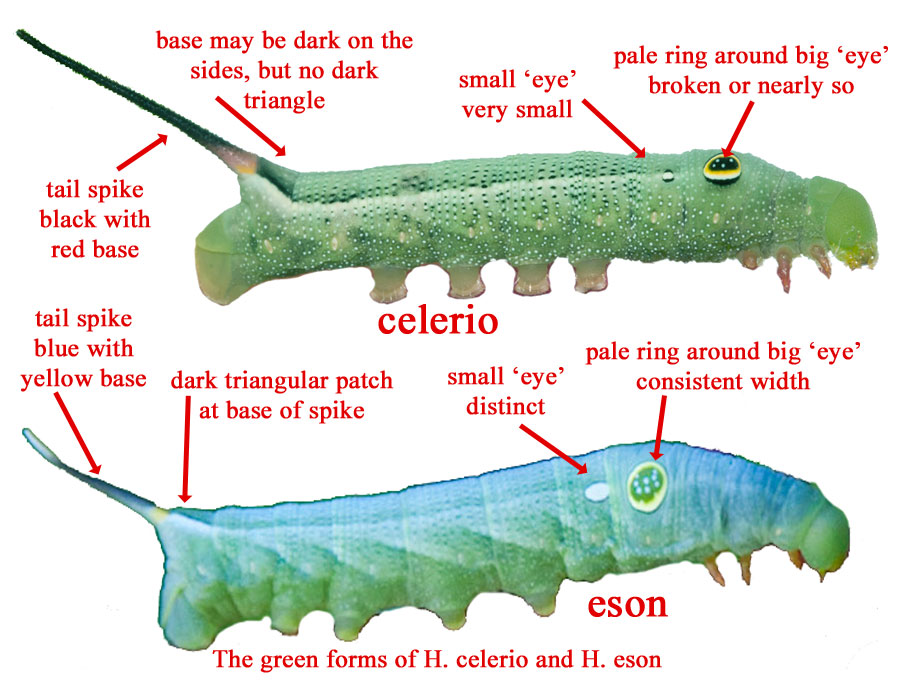Nephele
The Nepheles (Sphingidae).

Photo credits: N. accentifera @rodswazi / @seanakruger / inset @bartwursten | N. peneus @wynand_uys / @qgrobler | N. vau @roelofvdb / @suncana | N. argentifera @meagan37 / @mexel | N. comma @scottfrichardson / @bartwursten / @bartwursten / @martinmandak | N. aequivalens @martinmandak | N. cf. rosae/oenopion @bartwursten | N. bipartita @bartwursten | N. funebris @ricky_taylor
The insets of the silver markings are all from the left forewing.
Notes
- N. lannini apparently occurs in Moz. Looks pretty similar to N. funebris.
- N. rosae and N. oenopion on Afromoths look so similar to me that I can't tell the difference. We have only one ob on iNat so far (ID'd as rosae), so I have no comparisons to work with.
- All my images here need to be confirmed - please don't take this cheat sheet as gospel. If you have any suggestions for ID tips or corrections, please let me know!!
- Nepheles usually have green and brown forms. Some, especially comma often don't have the silver marking on the wing, or just a silver dot.
Thank you to the photographers!



